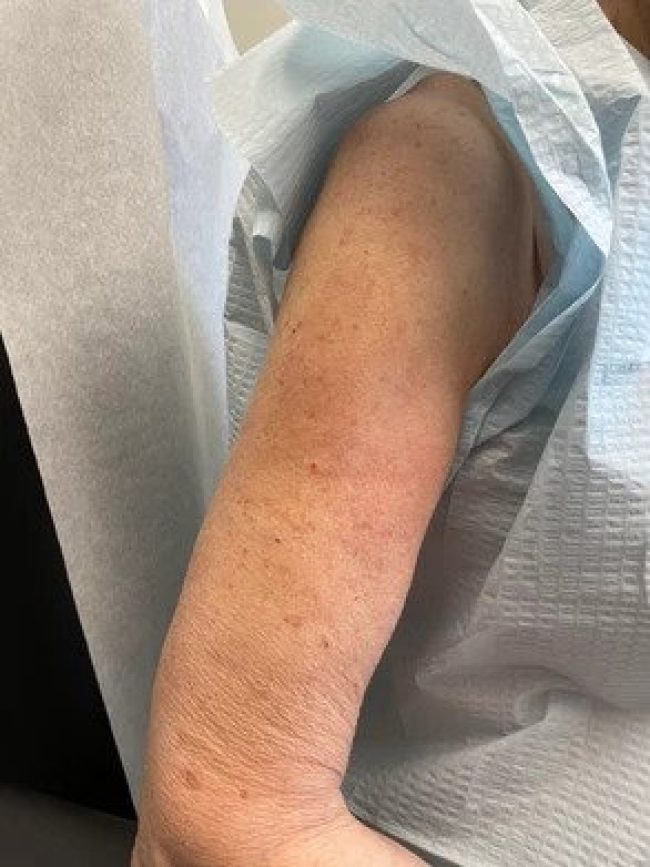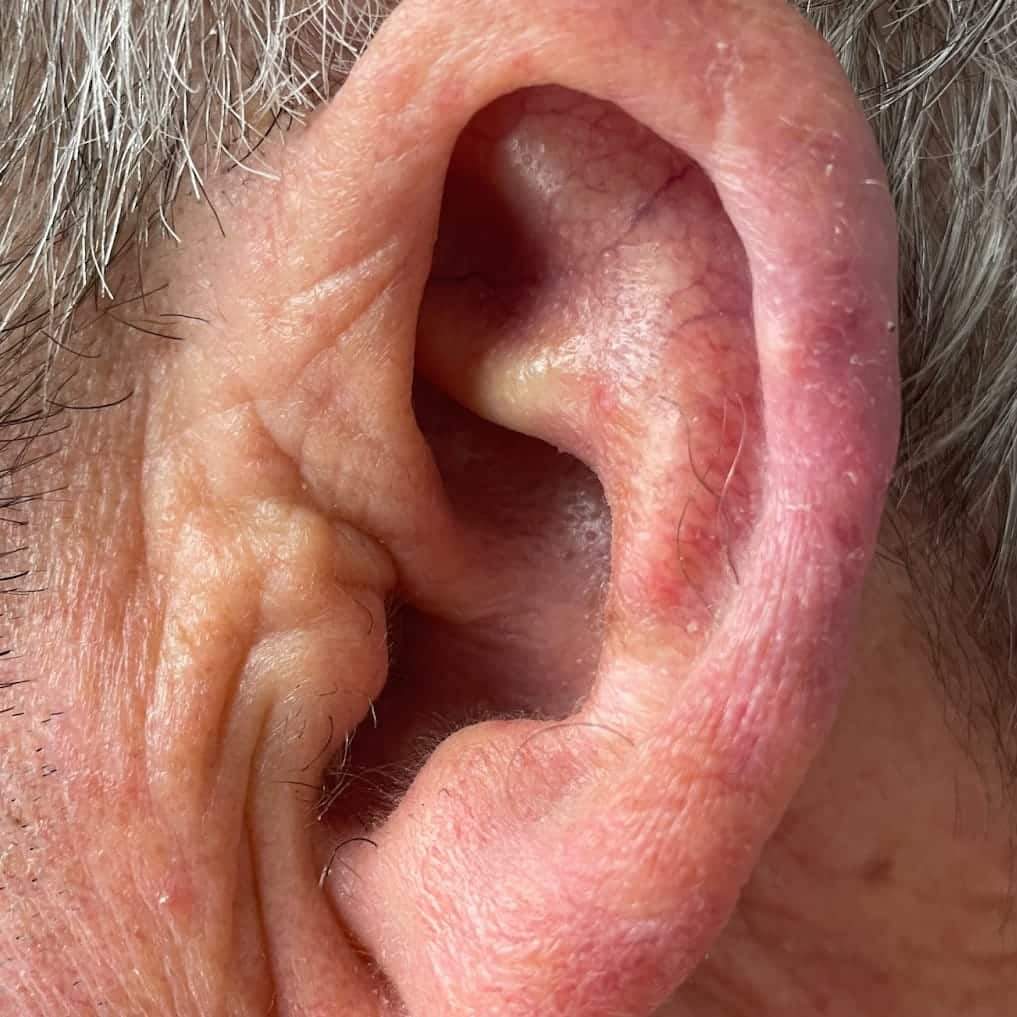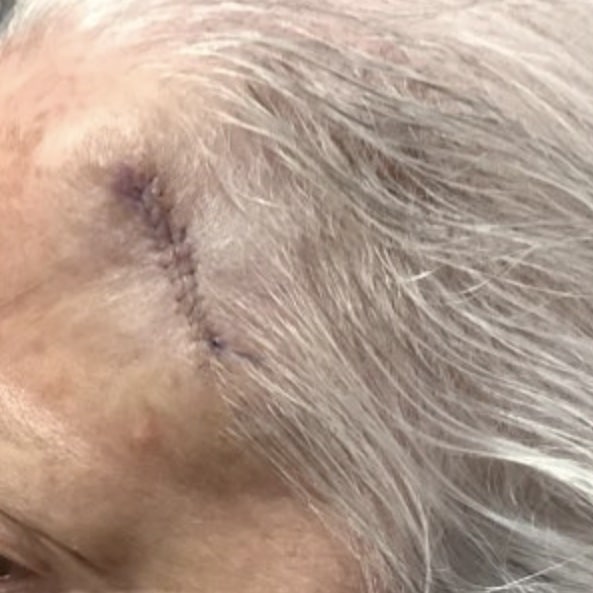A jab in the arm with a COVID vaccine has become one of the most coveted items in all of the land. Today, 46 million jabs across the nation so far and counting.
One of my patients came to see me today in my dermatology practice in Philadelphia after her jab in the arm turned into what the internet has tagged “COVID ARM”- a red, itchy, thickened rash around the vaccine that takes its time showing up, usually about a week after the vaccine.
COVID ARM is not a routine injection site reaction. Those are common after a COVID vaccine and set in quickly with redness and mild swelling at the site of the injection within hours to a few days of the vaccine. In the Moderna clinical trial, 3% of patients had redness after the 1st dose and 9% had redness after the 2nd dose. Swelling was a little more common than redness, occurring in 6.7% of patients after the first Moderna injection and in 12.6% of patients after the 2nd dose. Keep in mind, these injection site reactions are mild, common, and usually resolve within a few days.
But COVID ARM brews a little slower, rising up right at that time when perhaps you thought you were in the clear and have escaped any issues and just as you’re getting ready to countdown to that 2nd dose.

This is the “COVID ARM” that walked into my dermatology clinic today. The arm belonged to a wonderful woman I’ve been taking care of for more than a decade. She had her first COVID vaccine in January, and 7 days later, she says she developed a red, very itchy, swollen, but “not very painful” sandpaper like rash around her vaccine injection site.
Experts say this type of reaction is most likely a kind of delayed allergic reaction. Dr. Christine Ko, a professor of dermatology and pathology at the Yale University School of Medicine, told me, “it seems to be a rare delayed-type hypersensitivity reaction.”
She says COVID ARM can burn, itch and be painful, and “can be alarming if you’ve never heard of it, but it goes away.”
While we don’t know exactly what causes COVID arm the antigen, or trigger for the reaction, may be a component of the vaccine.
Thankfully COVID arm falls under the annoying or nuisance category of reactions and is not something very concerning. Ko says think of it kind of like poison ivy which is “the same type of hypersensitivity reaction – annoying but self-limited.”
My patient’s COVID arm, as you can see in the picture, has taken weeks to fade. At least 2 weeks so far, and she says no amount of COVID arm will deter her from her 2nd shot.
And the CDC agrees, a delayed type of local reaction like this that involves redness, thickening of the skin and itching does not mean you need to skip the 2nd dose.
According to the CDC, these delayed reactions were reported in the clinical trials that led to the FDA’s emergency use authorization of the vaccine. The CDC says, “it is not known whether persons who experienced a delayed-onset injection site reaction after the first dose will experience a similar reaction after the second dose.”
Dr. Ko and her colleagues have been tracking COVID ARMS the last few weeks. She says, “so far it seems people get the reaction again [after the second dose], within 2-3 days rather than 7.”
And despite COVID ARM being considered a type of local allergic reaction, the CDC says it is “not felt to represent a risk for anaphylaxis” after the 2nd dose. “Individuals with such delayed injection site reactions after the first mRNA COVID-19 vaccine dose should receive the second dose using the same vaccine product as the first dose and at the recommended interval.”
But experts suggest that if you do get a COVID arm after round 1 it may be best to get the 2nd vaccine in the opposite arm.
If you think you’re having a concerning injection site reaction or COVID arm, check-in with your dermatologist or doctor. The CDC also wants to know about it. You can report any vaccine-related issues to the CDC’s V-safe tool at this link:
https://www.cdc.gov/coronavirus/2019-ncov/vaccines/safety/vsafe.html





